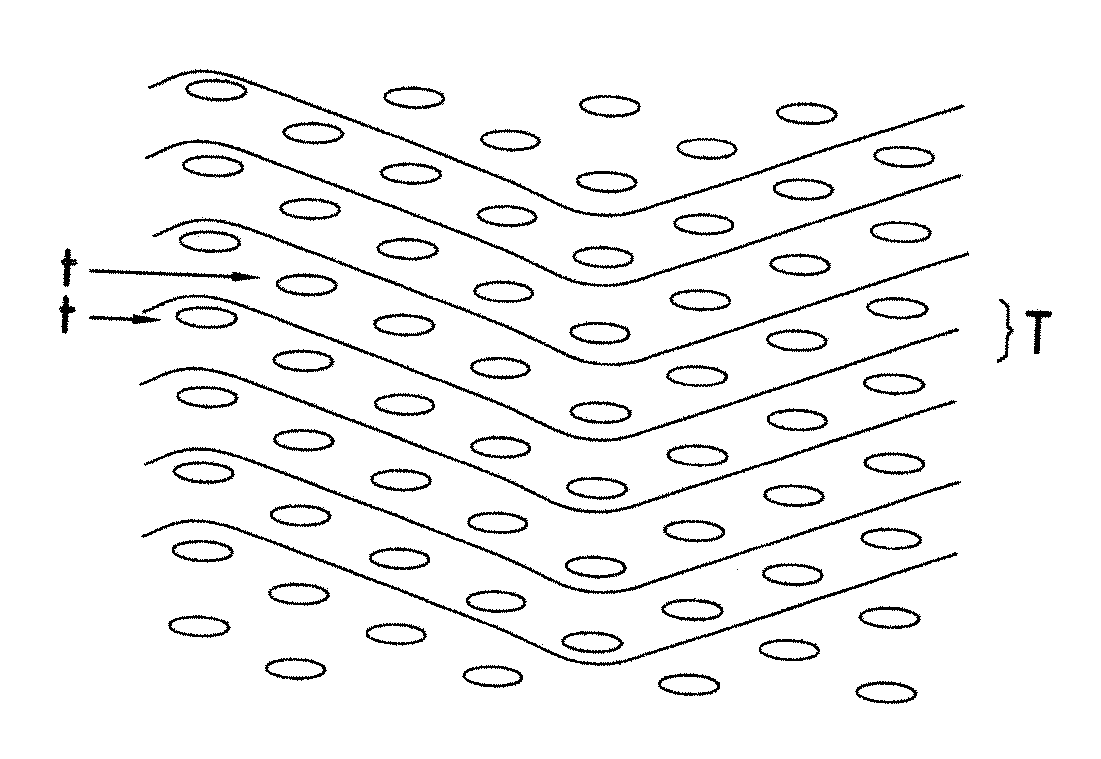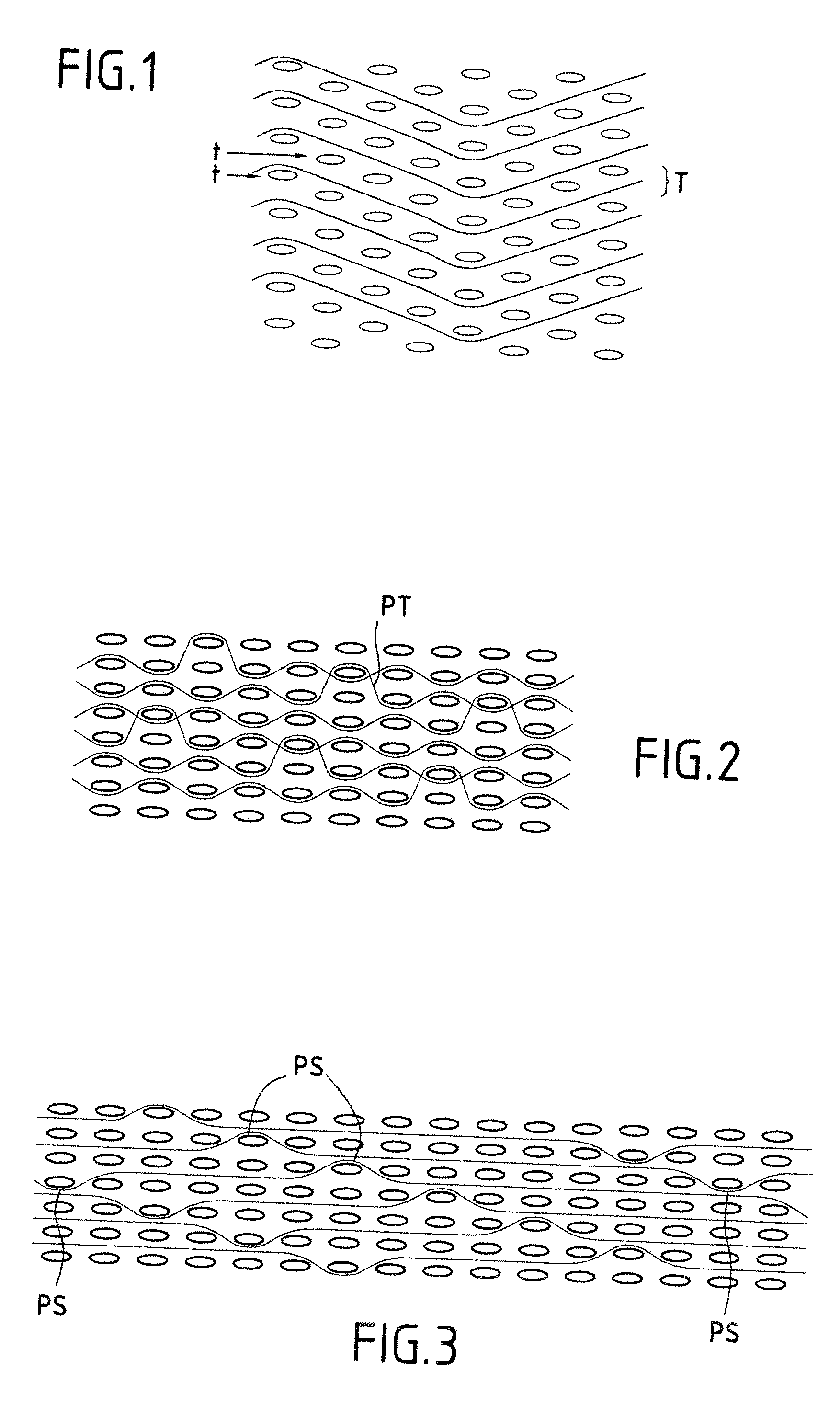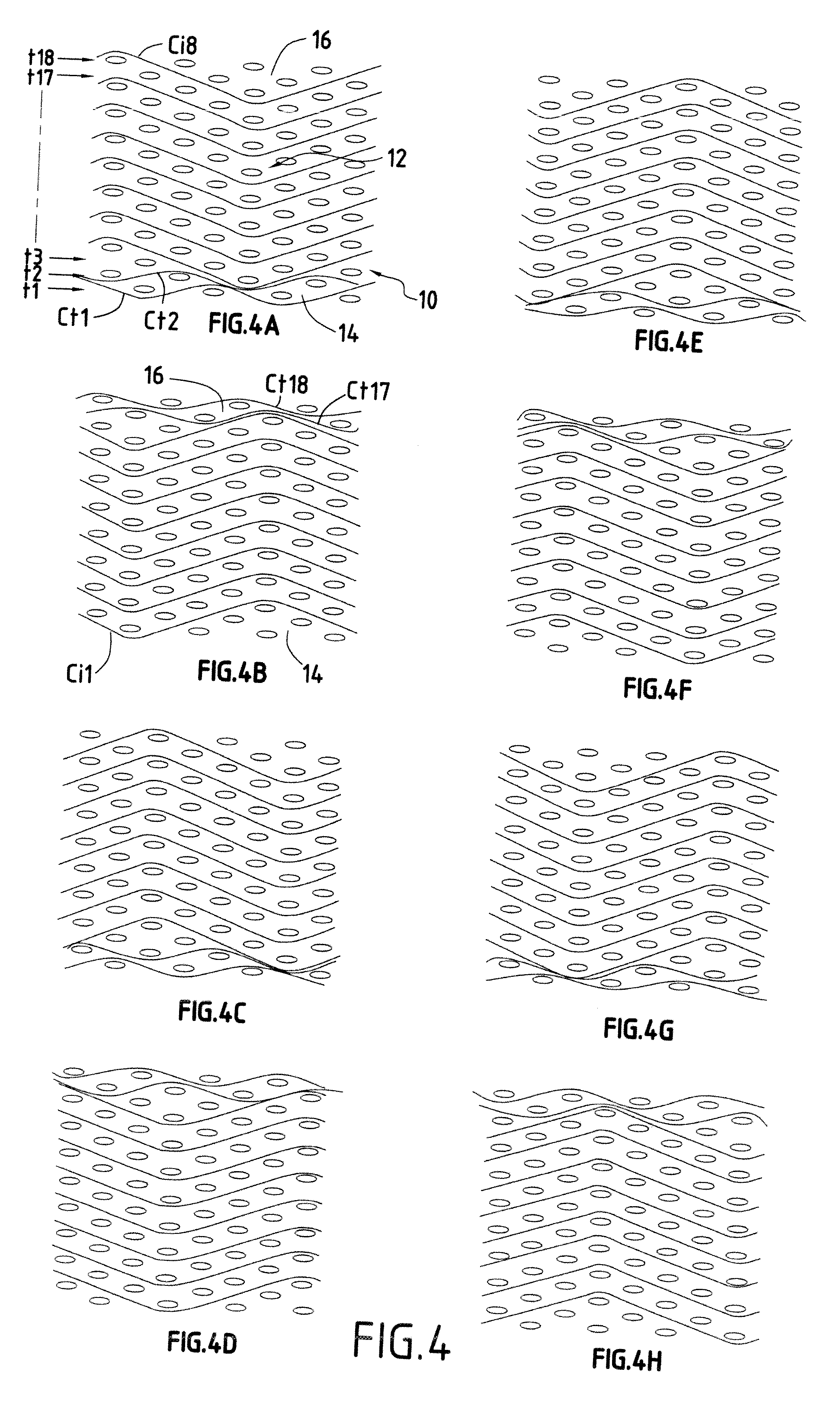Fiber reinforcing texture for making a composite material part
a fiber reinforcement and composite material technology, applied in the field of fiber reinforcement texture for making composite material parts, can solve problems affecting the properties of composite materials, and achieve the effects of reducing surface irregularities, avoiding steep densification gradients, and reducing surface irregularities
- Summary
- Abstract
- Description
- Claims
- Application Information
AI Technical Summary
Benefits of technology
Problems solved by technology
Method used
Image
Examples
example 1
[0050]FIGS. 4A to 4H show portions of eight successive planes of a weave of a fiber structure obtained by 3D weaving, the weft yarns being shown in section.
[0051]The fiber structure 10 comprises nine layers of weft yarns, i.e. 18 half-layers t1 to t18. In the core 12 situated between the opposite skins 14 and 16, the 3D weaving is of the interlock type with yarns made up in the majority from discontinuous carbon fibers held by a covering yarn sacrificial material, as described in EP 0 489 637, and with a 10 / 10 structure per layer (10 yarns per centimeter in both the weft and the warp directions). The covering yarn is constituted, for example, by a soluble polymer such as a polyvinyl alcohol or a polymer that can be eliminated by heat treatment without affecting the carbon of the fibers, such as a polyethylene or a polyvinyl acetate. In the skins 14 and 16, the weaving is two-dimensional with a plain type weave using yarns made up from continuous carbon filaments and with a 5 / 5 struc...
example 2
[0054]FIGS. 5A to 5H show portions of successive planes of a fiber texture 20 obtained by 3D weaving, this texture differing from that of Example 1 in that multi-layer weaving is performed in the skins 24 and 26 with a weave analogous to a multiple plain weave over a thickness of two weft half-layers, the 3D weaving in the core portion 22 being of the interlock type with each warp yarn extending over a depth of three half-layers of weft yarns, the weft yarns being disposed in a staggered configuration.
[0055]When multi-layer weaving is performed in the skin, there is no need for the interlock weaving to cover all of the weft layers of the skin. It can suffice for a single weft layer or half-layer situated at the interface between the core and the skin to be involved both with the interlock weaving and with the multi-layer weaving in order to obtain interlacing by 3D weaving between all of the weft yarns. Nevertheless, in the example shown, the interlock weave involves all of the half...
example 3
[0057]FIGS. 6A to 6H show portions of successive weft planes in a texture 30 obtained by three-dimensional multi-layer weaving, this texture differing from that of Example 1 in that the same interlock 3D weaving is performed in the core 32 and in the skins 34 and 36.
[0058]In the core 32, the weaving is performed using yarns made up from discontinuous fibers united by a sacrificial covering yarn, whereas in the skins 34 and 36, i.e. over one or two extreme weft half-layers, the weaving is performed using yarns made up from continuous filaments. In the example shown, the yarns made up from continuous filaments are the yarns of the weft yarn half-layers t1, t1, t17, and t18, and the warp yarns that engage the yarns of the half-layers t1, t18 (warp yarns C1 and C7 in FIGS. 6B and 6A).
[0059]In this example only the type of yarn varies between the core and the skin.
PUM
| Property | Measurement | Unit |
|---|---|---|
| chemical natures | aaaaa | aaaaa |
| cohesion | aaaaa | aaaaa |
| mechanical properties | aaaaa | aaaaa |
Abstract
Description
Claims
Application Information
 Login to View More
Login to View More - R&D
- Intellectual Property
- Life Sciences
- Materials
- Tech Scout
- Unparalleled Data Quality
- Higher Quality Content
- 60% Fewer Hallucinations
Browse by: Latest US Patents, China's latest patents, Technical Efficacy Thesaurus, Application Domain, Technology Topic, Popular Technical Reports.
© 2025 PatSnap. All rights reserved.Legal|Privacy policy|Modern Slavery Act Transparency Statement|Sitemap|About US| Contact US: help@patsnap.com



